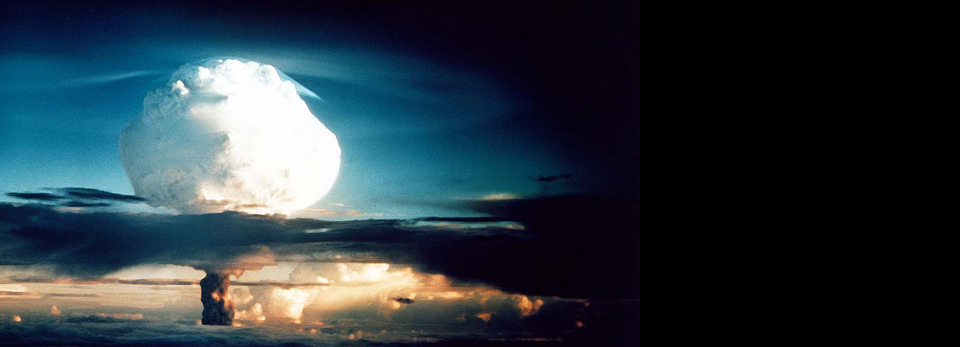Written from within the last “hot” period of the Cold War’s near half century span, Martin Amis’s 1987 essay “Thinkability” articulates how nuclear weapons embedded themselves within our personal and cultural imagination: "Everyone is interested in nuclear weapons, even those people who affirm and actually believe that they never give the question a moment’s thought. We are all interested parties…
View More Alluvium Editorial 5.4: Nuclear NarrativesCategory: Issue 5.4 – Special Issue “Nuclear Narratives”
The Futures of Nuclear Criticism
The unthinkable happened at 4.20pm on 28 October, 1988. Though lasting only thirty-six minutes – betrayal by European NATO allies prevented escalation into the global holocaust many had feared – nuclear attack transformed the United States. As Whitley Strieber and James Kunetka record in an extraordinary travel narrative about a perilous journey around the country five years…
View More The Futures of Nuclear CriticismDocumentary Film and Our Restless Nuclear Present
Our nuclear present is restless, yet we rarely conceptualise nuclear reality in this way. It can only ever be restless, as nuclear technologies shape our world, their relentless and dangerous forms remaining largely permanent and unseen, deliberately kept from our gaze. The “nuclear fuel cycle” is a hyper-long-term phenomenon and, at any split second, globally, there are hundreds of thousands…
View More Documentary Film and Our Restless Nuclear PresentHaunting Clouds
Clouds form part of a shared and familiar everyday aesthetic. Cloud narrative through which patterns are seen incorporate more than simple pareidolia when we consider the nuclear cloud. Ordinarily, pareidolia refers to witnessing illusion; thus, we might see images and symbols in clouds. However, the nuclear cloud engages a more nuanced narrative of cultural trauma than the term pareidolia encompasses.
View More Haunting CloudsRepresentations of National Identity in Cold War UK and US Civil Defence Films
Propaganda is a central weapon in the arsenal of modern conflict and Cold Wars especially are fought with images and words. The forty-year tension between East and West after the Second World War was responsible for the creation and distribution of national propaganda on a previously unprecedented scale as US and Soviet nuclear stockpiles increased exponentially and leaders shied away…
View More Representations of National Identity in Cold War UK and US Civil Defence Films




